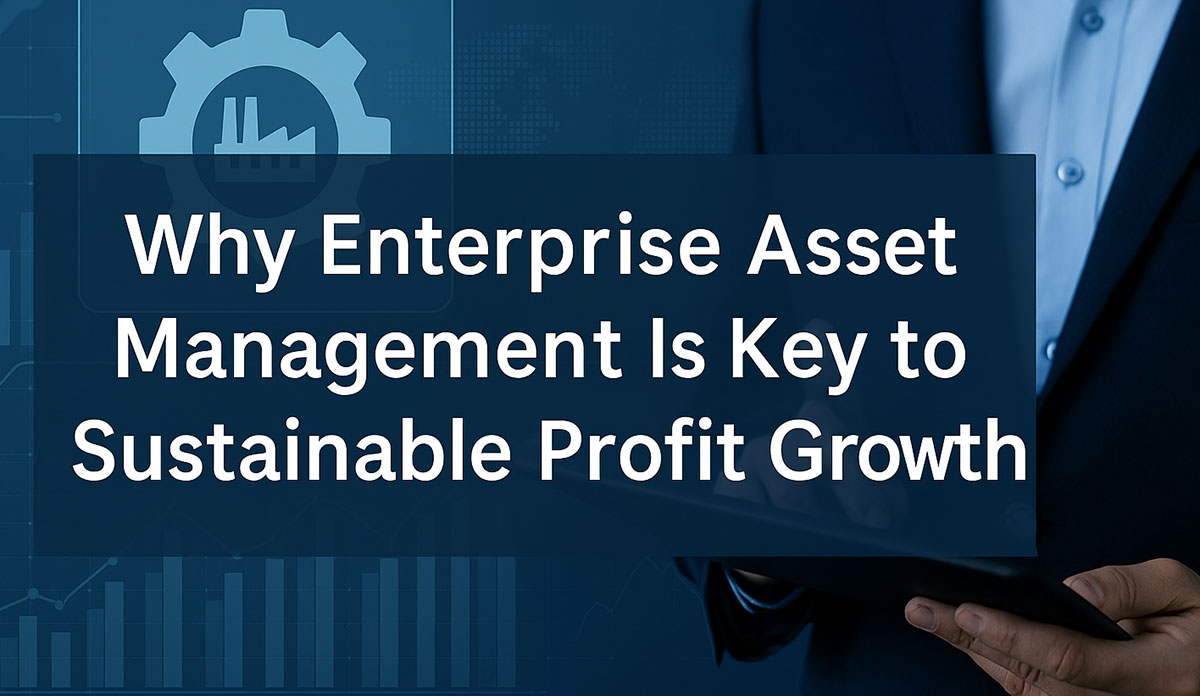No products in the cart.
 EAM: A Strategic Pillar for Modern Business Success
EAM: A Strategic Pillar for Modern Business Success
Modern businesses are constantly under pressure to extract more value from their physical and digital assets while minimizing downtime and avoiding unnecessary operational costs. In this context, Enterprise Asset Management, or EAM, is no longer just a support function—it has become a strategic pillar of operational success. Companies that harness the full potential of EAM systems can significantly boost profitability, streamline asset performance, and create a foundation for sustainable growth.
Centralized Control Across the Asset Lifecycle
An effective EAM system offers a centralized platform to oversee and manage the complete lifecycle of every asset a business relies on. From procurement and deployment to maintenance and eventual disposal, the system maintains a comprehensive view of each asset’s condition, performance history, and economic impact.
Real-Time Insights for Smarter Decision-Making
Real-time tracking and visibility into asset health help prevent delays and eliminate waste. Whether it’s manufacturing lines, delivery fleets, or IT infrastructure, EAM ensures that assets are monitored continuously to support better planning, reduced downtime, and enhanced operational efficiency.
From Reactive to Predictive Maintenance
One of the most transformative aspects of modern asset management is the shift from reactive to preventive and predictive maintenance strategies. Leveraging IoT sensors and data analytics, businesses can now anticipate issues before they cause disruptions, minimizing repair costs and protecting equipment health.
Prolonging Asset Lifespan Through Consistent Care
A major advantage of implementing EAM is the ability to significantly extend the operational lifespan of assets. Through regular checkups, updates, and proactive service routines, businesses reduce capital expenditures while maximizing the return on every asset investment.
Risk Mitigation and Regulatory Compliance
In asset-heavy industries, managing risk is a foundational element of operational integrity and compliance. EAM systems support compliance by maintaining audit trails, tracking certifications, and enforcing safety standards. They also help reduce exposure to physical and cyber threats by regulating access and automating security protocols.
Strategic Business Intelligence Integration
Another valuable function of EAM is its integration with broader analytics and intelligence systems. When paired with business intelligence platforms, EAM transforms key metrics like OEE and MTBF into strategic insights that guide investment and growth decisions.
Automation and IoT Elevate Operational Efficiency
The convergence of automation and IoT technologies is reshaping asset management through continuous monitoring, intelligent analytics, and optimized workflows. Smart sensors enable machines to self-monitor, communicate issues, and request service—eliminating delays and reducing the burden on human teams while improving overall reliability.
Cross-Industry Relevance and Scalability
EAM has become universally relevant across industries. From healthcare and logistics to construction and retail, effective asset management directly contributes to business performance. This cross-sector importance highlights the need for adaptable EAM solutions tailored to diverse operational environments.
Driving Profitability Through Asset Optimization
Maximizing profitability remains the cornerstone objective for all enterprises, and EAM plays a pivotal role in achieving that. By boosting asset reliability and minimizing disruptions, EAM delivers measurable improvements in productivity, efficiency, and cost control.
Choosing the Right EAM Solution
When selecting an enterprise asset management solution, businesses should prioritize features like full lifecycle tracking, IoT integration, regulatory compliance tools, and mobile-friendly interfaces. The ideal solution combines forward-thinking capabilities with practical usability to drive sustainable business growth.
Operational Excellence Through Intelligent Asset Management
Modern asset management is about visibility, intelligence, and control. Companies that embrace EAM platforms designed with these principles are better equipped for long-term success, enhanced productivity, and sustained profitability.
The Future of EAM: A Competitive Imperative
As the business landscape grows more competitive and complex, enterprise asset management emerges as a non-negotiable necessity. Its role in predictive maintenance, cost efficiency, and strategic agility positions EAM as a crucial driver of future-ready operations.
Final Thought: EAM as a Business Enabler
Enterprise Asset Management is no longer just about keeping machines running. It’s about running the business smarter.
Stay updated! Follow us on social media! Facebook, Twitter, LinkedIn
Check out our newest blog entry ( How actsupport Optimizes SolusVM Server Operations)
Subscribe to get free blog content to your Inbox
The Hidden Cost of Poor Hosting Support



 EAM: A Strategic Pillar for Modern Business Success
EAM: A Strategic Pillar for Modern Business Success